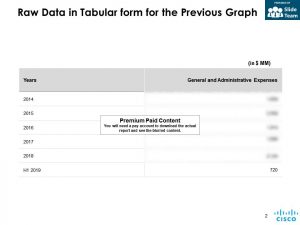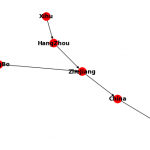University Equipment Capitalization Policy
Content


Depreciation is the process of allocating the cost of the asset to operations over the estimated useful life of the asset. For financial reporting purposes, the useful life is an asset’s service life, which may differ from its physical life. An asset’s estimated useful life for financial reporting purposes may also be different than its depreciable life for tax reporting purposes. Capitalized costs consist of the fees that are paid to third parties to purchase and/or develop software.
Furniture by nature can be used in different configurations and combinations and relocated with ease. Since tracking of each piece is not reasonable, these items will be capitalized as a group purchase at year end and depreciated over an estimated useful life of 10 years when the individual purchase exceeds $5,000. Furniture in capitalized construction projects is included in the cost of the construction. The process of writing off an asset over its useful life is referred to as depreciation, which is used for fixed assets, such as equipment. Amortization is used for intangible assets, such as intellectual property. Depreciation deducts a certain value from the asset every year until the full value of the asset is written off the balance sheet.
Land Improvements
Asset capitalization and depreciation, compared with expensing costs when incurred, reduces fluctuations in income over time. Long-term asset expenditures often are large when compared with normal income. For small-business owners, the effect is even greater as the company’s income is generally smaller accounting capitalization to begin with. If the entirety of the purchase is expensed immediately, this can distort the company’s net income figure, showing unfairly reduced income. By capitalizing the amount and spreading the expense over a period of time through the depreciation process, these effects are reduced.


A capital expenditure is assumed to be consumed over the useful life of the related fixed asset. A revenue expenditure is assumed to be consumed within a very short period of time. Capitalization in accounting also refers to transferring an off-balance-sheet operating lease onto the balance sheet and recording it as a capital lease. To do this, calculate the present value of the future operating lease payments and record the amount on the balance sheet as an asset with a corresponding liability. In 2003, the FinREC redeliberated and submitted a proposed Statement of Position to the FASB for approval . The term “capitalization” is defined as the accounting treatment of a cost where the cash outflow amount is captured by an asset that is subsequently expensed across its useful life.
Capitalizing software costs
In contrast, all the revenues and gains should not be recorded, and such revenues and profits should be recognized only when there is reasonable certainty of its actual receipt. This paper examines the relationship between research and development (R&D) and firm performance for a collection of Nasdaq listed firms. We employ threshold models à la Hansen to test whether there is a nonlinear relationship between R&D and firm performance. We also investigate empirically the impact of the 2008 global financial crisis on the links between R&D and firm performance. Our results confirm the existence of threshold effects, suggesting that R&D and firm performance have a nonlinear relationship. We find that firms with high R&D intensity do not necessarily outperform those with low R&D intensity.


Interest cost incurred before the end of a construction period is recognized as an expense in the period in which the cost is incurred and is not capitalized per GASB Statement No. 89. Capital expenditures are charged to expense gradually via depreciation and over a long period of time. Revenue expenditures are charged to expense in the current period or shortly thereafter.
AccountingTools
Office furniture purchased in components should be capitalized only if the individual components that cannot be separated cost at least $5,000. Additions represent major expenditures that are capital in nature because they increase the service potential of the related building. Additions costing less than $50,000 should be treated as repairs and maintenance even through they have the characteristics of capitalized expenditures.
- The benefits are short-term (i.e. Hence, inventory is classified as a short-term asset, i.e. cleared out within one year.
- Revenue expenditures are charged to expense in the current period or shortly thereafter.
- The computer has a useful life of three years, but it does not meet the company’s $1,000 capitalization limit, so the controller charges it to expense in the current period.
- Financial StatementsFinancial statements are written reports prepared by a company’s management to present the company’s financial affairs over a given period .
- These guidelines have been revised and now provide the University greater flexibility in regards to surplus property.
Results of inventories shall be reported to Plant Accounting at least annually. Accessory equipment that is acquired subsequent to the purchase of the parent item must have the capitalization criteria applied to it separately. This criteria will determine if the item is to be expensed or capitalized. GoodwillIn accounting, goodwill is an intangible asset that is generated when one company purchases another company for a price that is greater than the sum of the company’s net identifiable assets at the time of acquisition.
The impact of deferred tax allocation on earnings as a measure of firm performance
Profit MarginProfit Margin is a metric that the management, financial analysts, & investors use to measure the profitability of a business relative to its sales. It is determined as the ratio of Generated Profit Amount to the Generated Revenue Amount. We examine whether the dividend policy of high-tech firms is explained by ESG performance in the triple ESG components . R&D intensity is a constraint of dividend policies, although ESG scores mitigate this adverse effect by helping increase the likelihood of dividend payments.
Intangible assets are amortized over the estimated useful life of the asset. If the intangible asset is deemed to have an indefinite useful life, then the asset is not amortized. Capital assets are recorded at cost at the date of acquisition, or at estimated acquisition value at date of gift, and are depreciated on a straight-line basis over the useful life of the asset. Also, if management wishes to make the profitability of a company appear better in the current year, they may opt to capitalize costs so that the expenses are reflected in future years. Additionally, if a manager wants to purposefully make their profitability appear better in later years, they may opt to expense costs right away. Thus, the importance of capitalized costs is to smooth expenses over multiple periods instead of booking one large outflow at once.
Alterations that modernize rather than improve the quality of a building should be expensed unless the alteration is so extensive as to increase the estimated life of the building. § An appropriate increase in depreciation expense is recognized in future years but the useful life is not increased. The cost of a building that is acquired but immediately removed to prepare the land for construction of a new building is treated as part of the cost of the land rather than as part of the cost of the new building. A renovation or building addition is capital when it enhances the use of, or extends the life of the building if the capitalizable amount equals or exceeds $100,000.00 or 20% of the building cost, whichever is less. Expenditures incurred in demolishing or dismantling equipment including those expenditures related to the replacement of units or systems. The staff presented the results of the capital assets pre-agenda research.
- Specific-use items like networked inventory tracking tablets are probably not going to be subject to employee theft, so the purchasing department tablet computers, though technically fixed assets, will probably be expenses as a period cost.
- The act of identifying and capitalizing fixed-asset costs can be tricky and time-consuming.
- Capitalization can refer to thebook valueof capital, which is the sum of a company’s long-term debt, stock, and retained earnings, which represents a cumulative savings of profit or net income.
- The lesser agrees to transfer the ownership rights to the lessee once the lease period is completed, and it is generally non-cancellable and long-term in nature.
What is capitalized vs expensed?
Expensing is only applied when an expenditure is consumed at once, while capitalizing is applied when consumption occurs over a longer period of time. Another difference is that a lower cap is usually imposed on the amount that can be capitalized, which is not the case when expenditures are charged to expense.
